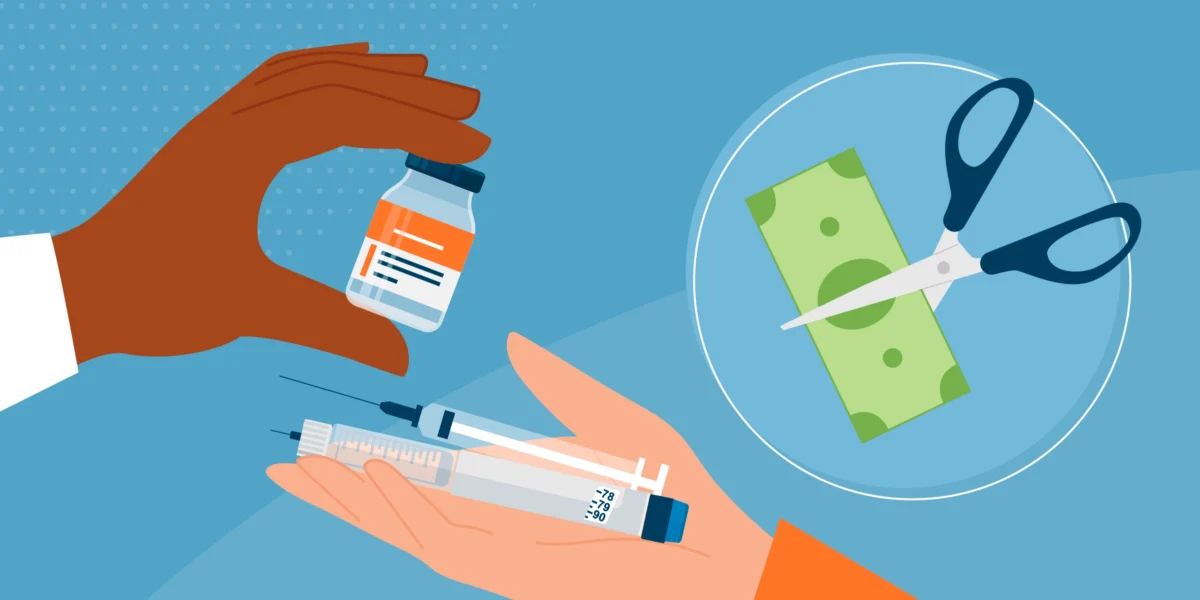PBMs, or pharmacy benefit managers, are private businesses that handle the logistics of providing prescription medication coverage for various clients, including large companies and organizations, health insurance providers, Medicare Part D drug plans, pharmacies, and other payers. PBMs were developed to help patients save time and money. They hoped doing so would help reduce prescription drug costs and simplify submitting claims for those drugs.
In the pharmaceutical industry, PBMs play the role of intermediaries. They bargain with drug companies and wholesalers to help their customers save money on their prescriptions. The Commonwealth Fund states that PBMs aid insurers and pharmacies in estimating total drug costs. According to an article published by John Arnold in Stat News in August 2018, PBMs represent customers from a wide variety of large enterprises and insurers, making them massive purchasing networks with considerable purchasing leverage in the pharmaceutical industry. Drug discounters, or PBMs, should use their significant buying power to drive down the retail price of medications and then pass the savings on to their customers.
Yet PBMs are more than just intermediaries. Presently, PBMs are engaged in: Developing and updating formularies or the catalog of prescription drugs (both generic and brand name) that health insurers will reimburse.
- Bargaining discounts with drug makers
- For medications, prices, discounts, and delivery fees are negotiated with local pharmacies.
- Locating and maintaining network pharmacies for prescription drug plans.
- Medication evaluations are being conducted.
- Controlling a patient’s adherence
- Handling of claims and settlement
- Providing a low-priced pharmacy delivery service and specialty drug selection by mail
- Issues and Revisions
The healthcare industry is worried about the PBM industry’s lack of openness and the low percentage of manufacturer rebates and discounts passed on to patients. Policymakers have considered several solutions, one of which is increased national and state regulation of pharmacy benefit managers (PBMs) and their associated pass-through rates. Spread pricing occurs when a pharmacy benefit manager (PBM) bills a payer more than it reimburses to a pharmacy and keeps the difference. Several states and the Centers for Medicare & Medicaid Services (CMS) want to limit or outlaw this practice.
According to a survey of health plan and PBM employees, the percentage of manufacturer rebates passed through to health plans increased from 78% in 2012 to 91% in 2016. In addition, CMS found that PBMs’ ability to negotiate more significant rebates from pharmaceutical producers had reduced costs and slowed prescription spending growth during the previous three years.
Primary care physicians in hospice
Pharmacy benefit administration has been an essential part of the hospice sector for the past two decades. When a hospice patient is diagnosed with a terminal illness, the hospice must cover the total cost of any medications associated with that diagnosis, making the purchasing and bargaining power offered by a PBM even more crucial.
PBMs save money for hospices and offer them the pharmacological knowledge they need. Hospice laws call for a pharmacist to oversee each patient’s medication regimen, which is difficult to achieve with a community pharmacy and impossible without the interface options a PBM offers (see Your EMR-PBM Interface below). The PBM allows hospices to collect and analyze prescription data daily, weekly, or monthly based on patient, diagnosis, or date range.
In addition, hospice PBMs offer essential support and education services like 24-hour support (important for practitioners), hospice emergency or comfort kits, online portals for nurses, and even nursing CEUs (Continuing Education Units).
Mechanisms for Price Dispersion
The PBM agrees to pay the pharmacy $X and then bill you at the agreed-upon spread price. The problem is, as a hospice, you aren’t familiar with the $X. Depending on the terms of your spread pricing contract, which are often based on reduced AWP, the PBM may charge you $22.00 for medicine it only paid the pharmacy $10.00 for. That transaction resulted in a $12 profit for the PBM. This happens rather often.
An outstanding illustration of the utilization of a specific drug is generic Zofran. The cost to acquire a prescription from a pharmacy may be $8; however, the cost to purchase an AWP maybe $600. Spread pricing in a contract at AWP minus 50% results in a $300 fee. I know what you’re thinking: “That ought to be outlawed!” I fully agree.
A surprising number of PBMs use the spread pricing method. The truth is that there are far too many drugs that are analogous to Zofran. Numerous unnecessary examples would be wasted space here.
The amount the PBM pays the pharmacy is “spread priced,” so it’s not apparent. Is the price too high for you? The hospice would have to ask the pharmacy how much they were compensated, but the pharmacy is not allowed to reveal this information under many contracts. The average claim payment made by publicly traded PBMs is over $8, as can be shown by digging into their financial filings.
Explaining the Positive Effects of Price Transparency
There is, however, a silver lining to this cloudy picture: Easy to Understand Costs.
If my PBM has a transparent arrangement with your Hospice, a $3.50 transaction charge will be applied.
Example: If we pay the pharmacy $10.00, hospice would be billed $13.50. We will charge the hospice $303.50 if the pharmacy bill is $300.
What we paid at the pharmacy and how much we made are both known to you. The pharmacy staff knows just how much money they are making off you. A lot of smoke and mirrors won’t fool anyone. It’s a done deal. Everybody’s on the same page. PBM, pharmacy, and hospice can all benefit from a transaction’s openness if all involved parties are treated with dignity and respect.
I am a professional writer and blogger. I’m researching and writing about innovation, Entertainment, technology, business, and the latest digital marketing trends click here to go website. Follow my blog here & Visit my website here.



